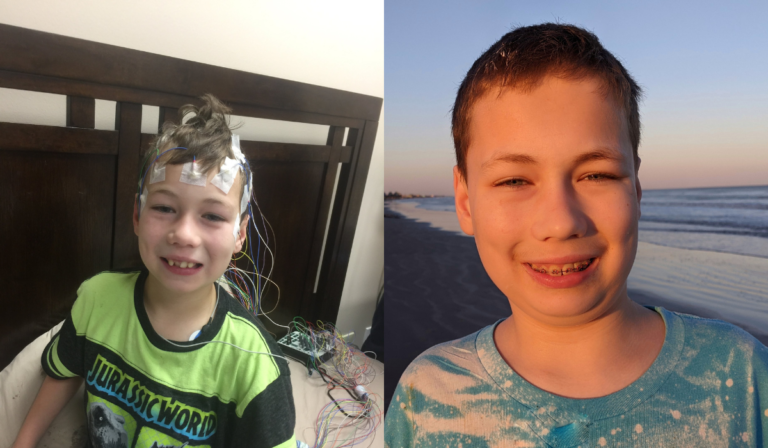After 100 years of the first legal clampdown on cannabis in Texas, the Compassionate Use Act was signed into law, allowing for the use of medical cannabis for patients living with intractable epilepsy. While a small number of Texans qualified for medical cannabis, the success we witnessed in each patient was monumental. Today, medical cannabis is legal for patients living with epilepsy, other seizure disorders and over 150 more conditions. Read more below in this week’s blog about medical cannabis for seizures.
Epilepsy and Seizures
Epilepsy is a neurological condition of the brain characterized by two or more unprovoked seizures. For some, the cause of epilepsy is unknown, while in other cases, epilepsy is linked to genetic makeup, brain tumors, abnormal brain development or other known factors. A nonepileptic seizure unrelated to epilepsy may happen to anyone a single time due to abnormal blood sugar, fever, head injury, withdrawal from a substance and more.
A seizure occurs when abnormal electrical activity occurs in one or more parts of the brain and disrupts normal brain signals. Seizures are classified into two groups, focal and generalized. Focal seizures affect one part of the brain, whereas generalized seizures affect both sides of the brain. Antiepileptic drugs (AEDs) are typically prescribed for seizures however result in their own set of unwanted side effects. Additionally, according to the National Library of Medicine, about one-third of patients living with epilepsy are resistant to AEDs. For thousands of patients in Texas, medical cannabis offers a safe and effective alternative for minimizing or preventing seizures.
The Endocannabinoid System and Seizure Activity
The endocannabinoid system is responsible for regulating many functions in the body, including brain activity. Medical cannabis contains over 100 different phytocannabinoids that are chemically similar to endocannabinoids naturally produced by our body. The two most common cannabinoids used for medicinal purposes today are THC (tetrahydrocannabinol) and CBD (cannabidiol). A 2017 double-blind, placebo-controlled trial discovered that out of the 120 patients, at least 50% had a reduction in convulsive-seizure frequency when given CBD (cannabidiol). Additionally, multiple studies involving animal models have demonstrated the efficacy of cannabinoids in reducing inflammation and seizure activity.
Medical cannabis may:
- Reduce or prevent seizure activity
- Prevent migraines
- Improve sleep
- Increase alertness
- Reduce prescription medication
- Improve cognition
- Decrease GI discomfort
Patient Success with Medical Cannabis
Jacob is a Texas Original patient who recently celebrated two full years without experiencing a seizure. Jacob was diagnosed with epilepsy at 3 years old and underwent several trials of antiepileptic medications. Medical cannabis has not only allowed Jacob to achieve seizure freedom but has also allowed him to go on vacation with his family, participate in daily activities and even be accepted into the gifted and talented program at his school.


After being diagnosed with autism and epilepsy as a child, James tried several medications, therapy and even came close to undergoing brain surgery. James’ family began to worry that they may lose their son and decided to give medical cannabis a try. As a result, James is now over two years seizure-free, his coordination has improved tremendously and he can participate in activities with his friends and family.


After more than two decades of enduring seizures and severe migraines, Sophia finally found life-changing relief with medical cannabis. Sophia developed seizures after her first pregnancy due to pre-eclampsia and severe swelling. She went through several trials of medications but experienced several unwanted side effects. For more than two decades, Texas Original patient, Sophia, endured severe migraines and seizures that prevented her ability to drive, work and spend time with family. Medical cannabis has allowed Sophia to start driving again, run a successful business and vacation with her family.


Get a Medical Cannabis Prescription
Are you ready for relief? Experience the life-changing benefits of medical cannabis by clicking below.
References
“Causes of Epilepsy.” Epilepsy Foundation, www.epilepsy.com/causes
Cheung, Keith A Kwan et al. “The Interplay between the Endocannabinoid System, Epilepsy and Cannabinoids.” International journal of molecular sciences vol. 20,23 6079. 2 Dec. 2019, doi:10.3390/ijms20236079
“Diagnosing Seizures and Epilepsy.” John Hopkins Medicine, 8 Aug. 2021, www.hopkinsmedicine.org/health/conditions-and-diseases/epilepsy/diagnosing-seizures-and-epilepsy.
Epilepsy Data and Statistics | CDC. https://www.cdc.gov/epilepsy/data/index.html
Orrin Devinsky, M.D., J. Helen Cross, Ph.D., F.R.C.P.C.H., Linda Laux, M.D., Eric Marsh, M.D., Ian Miller, M.D., Rima Nabbout, M.D., Ingrid E. Scheffer, M.B., B.S., Ph.D., Elizabeth A. Thiele, M.D., Ph.D., and Stephen Wright, M.D. for the Cannabidiol in Dravet Syndrome Study Group*. “Trial of Cannabidiol for Drug-Resistant Seizures in the Dravet Syndrome.” The New England Journal of Medicine, May 2017, www.nejm.org/doi/full/10.1056/NEJMoa1611618.
Pacher, Pál et al. “The endocannabinoid system as an emerging target of pharmacotherapy.” Pharmacological reviews vol. 58,3 (2006): 389-462. doi:10.1124/pr.58.3.2
Rosenberg, E.C., Tsien, R.W., Whalley, B.J. et al. Cannabinoids and Epilepsy. Neurotherapeutics 12, 747–768 (2015). https://doi.org/10.1007/s13311-015-0375-5
Types of Seizures | CDC. https://www.cdc.gov/epilepsy/about/types-of-seizures.html




